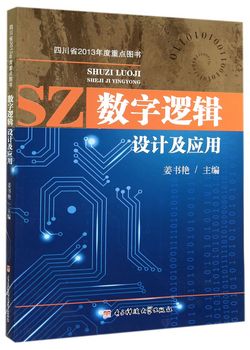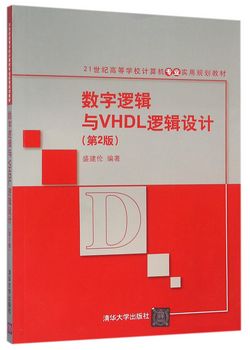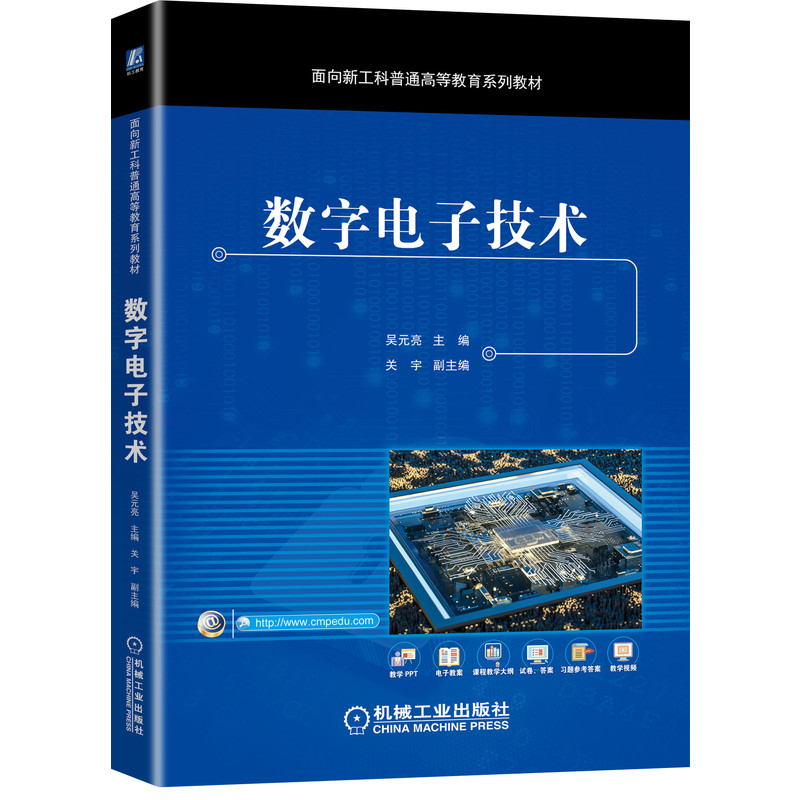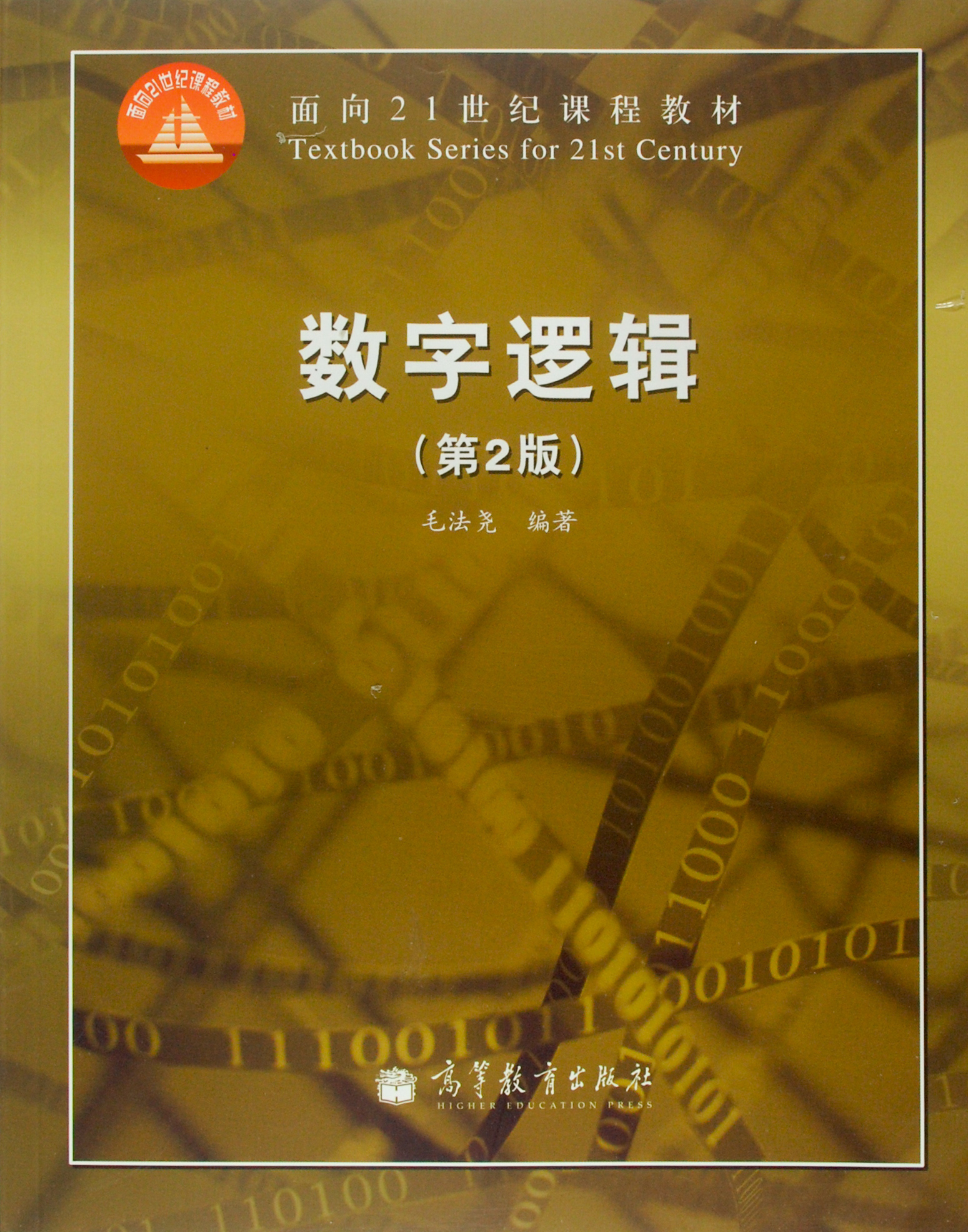- 电子科技大学出版社
- 9787564726195
- 145329
- 0046168198-3
- TP302.2
- 理工类
- 研究生、本科
内容简介
《数字逻辑设计及应用》为适应现代数字电子技术集成工艺和计算机技术的飞速发展以及双语教学的需要,对传统的数字电路课程教材从内容到体系进行了尝试性的深入改革,突出理论与实践的结合,强调了双语的表达。本书讨论了数字逻辑设计及应用的基本理论和方法,通过实例介绍了多种电路结构,充实了计算机辅助设计的基本概念,并将可测性设计适度引入教材,有一定的广度和深度。本书取材眼界宽,有一定的前瞻性,重点强调CMOS逻辑系列,提供大量的设计实例,以及具有指导意义的练习题。全书叙述概念清楚,深入浅出,条理清晰。
本书共10章,主要内容有:信息的二进制表达、逻辑代数基础、逻辑门电路、组合逻辑电路设计、存储电路、时序逻辑电路设计、大规模半导体存储器和可编程逻辑器件、数模和模数转换、现代数字系统设计。
本书可作为高等学校电工、通信、控制、电气、电子信息和计算机等专业的大学本科教材,同时也可作为从事电路设计、通信工程以及计算机等专业科技工作者的参考书。本书由姜书艳担任主编。
本书共10章,主要内容有:信息的二进制表达、逻辑代数基础、逻辑门电路、组合逻辑电路设计、存储电路、时序逻辑电路设计、大规模半导体存储器和可编程逻辑器件、数模和模数转换、现代数字系统设计。
本书可作为高等学校电工、通信、控制、电气、电子信息和计算机等专业的大学本科教材,同时也可作为从事电路设计、通信工程以及计算机等专业科技工作者的参考书。本书由姜书艳担任主编。
目录
第一章 引论(Introduction)
1.1 我们周围的数字系统(Digital Systems aroundUs)
1.2 数字系统的世界(World ofDigital Systems)
1.3 实现数字系统的方法(Implementing Digital Systems)
1.4 数字系统设计(Digital System Design)
本章小结(Brief Summary ofthis Chapter)
思考题和习题(Problems and Exercises)
第二章 信息的二进制表达(Binary Expression ofInformation)
2.1 引言(Introduction)
2.2 数字的二进制表达(Binary Expression ofNumbers)
2.2.1 按位计数制(Positional Number Systems)
2.2.2 数字的二进制表达(Binary Expression ofNumber)
2.2.3 二进制缩写表达:八进制和十六进制(Abbreviation Expression of Binary Numbers: Octaland Hexadecimal Numbers)
2.2.4 二进制与十进制的转换(Binary and Decimal Number-System Conversions)
2.3 二进制数的算数运算(Arithmetic Operation ofBinary Numbers)
2.3.1 数字系统中的无符号数(Unsigned Number of Digital System)
2.3.2 加法运算与乘法运算(Addition and Multiplication)
2.3.3 符号数的表达(Representation of Signed-Numbers)
2.3.4 不同表达方式之间的转换(Conversion ofDifierent Expressions)
2.3.5 符号数的运算规则(Operational Rules of Signed Number)
2.3.6 定点数和浮点数的表示(Representation ofFixed PointNumbers and Floating Point Numbers)
2.4 信息的二进制编码(Binary Codes ofInformation)
2.4.1 一般字符与状态编码(Codes for General Character and State)
2.4.2 ASCⅡ编码(ASCⅡ Code)
2.4.3 十进制数的二进制编码(Binary Codes for Decimal Number)
2.4.4 独热码(One-hot Code)
2.4.5 格雷码(Gray Code)
2.4.6 检错和纠错编码(Codes for Detecting and Correcting Errors)
本章小结 (Brief Summary ofthis Chapter)
思考题和习题(Problems and Exercises)
第三章 逻辑代数基础(Basis of Logic Algebra)
3.1 引言(Introduction)
3.2 基本逻辑系统表达(Expression of Basic Logic System)
3.2.1 逻辑代数中的三种基本运算(Three Basic Operations in Boolean Algebra)
3.2.2 几种导出的逻辑运算(Several Educed Logic Operation)
3.2.3 IEEE逻辑符号(IEEE Logic Symbols)
3.3 逻辑代数的公理和定理(Axioms and Theorems in Logic Algebra)
3.3.1 公理(Axioms)
3.3.2 单变量定理(Single Variable 7heorems)
3.3.3 二变量和三变量的定理(Two-and Three-Variable Theorems)
3.3.4 n变量定理(n-Variable Theorems)
3.3.5 异或、同或运算的定理(TheoremsofXORandXNOROperations)
3.3.6 代入定理(Substitution mheorem)
3.3.7 反演定理(Complement Theorem)
3.4 正负逻辑与对偶定理(Positive and Negative Logic and Duality Theorems)
3.4.1 正负逻辑(Positive and Negative Logic)
3.4.2 对偶定理(Duality Theorem)
3.4.3 信号名和有效电平(Signal Names andActive Levels)
3.5 香农展开定理与标准逻辑运算(Shannon's Expansion Theorems and Canonical Forms ofLogic Function)
3.5.1 香农展开定理(Shannon's Expansion Theorems)
3.5.2 真值表的标准逻辑表达(Standard Logic Expression of Truth Table)
3.5.3 最小项与最大项(MintermandMaxterm)
3.5.4 逻辑函数的标准形式(Canonical Form ofLogic Function)
3.5.5 最小项和最大项之间的关系(Relation ship ofMinterm and Maxterm)
3.6 逻辑函数的表示方法(Expression Methods ofLogic Functions)
3.6.1 逻辑函数的几种常用表示方法(Popular Expression Methods of Logic Function)
3.6.2 几种表示方法间的相互转换(Interconversion of Difierent Expressive Methods)
3.7 逻辑函数的化简(Simplification ofLogic Functions)
3.7.1 逻辑函数的最简形式(Minimization Forms ofLogic Functions)
3.7.2 利用逻辑代数公式化简(Minimization with Logic Algebra Equations)
3.7.3 卡诺图法化简逻辑函数(Minimization with Kamaugh Map)
3.7.4 具有无关项的逻辑函数及其化简(Minimization of Logic Function with Don't Care Terms)
3.7.5 多输出函数的化简(Minimization of Multi-Outputs Function)
……
第四章 逻辑门电路(Logic Gates Circuits)
第五章 组合逻辑电路设计(Combinational Logic Circuit Design)
第六章 存储电路(Memory Circuits)
第七章 时序逻辑电路设计(Sequential Logic Circuit Design)
第八章 大规模半导体存储器和可编程逻辑器件(VLSI Semiconductor Memory And Programmable Logic Devices)
第九章 数模和模数转换器(DAC and ADC)
第十章 现代数字系统设计(Modem Digital System Design)
习题参考译文
1.1 我们周围的数字系统(Digital Systems aroundUs)
1.2 数字系统的世界(World ofDigital Systems)
1.3 实现数字系统的方法(Implementing Digital Systems)
1.4 数字系统设计(Digital System Design)
本章小结(Brief Summary ofthis Chapter)
思考题和习题(Problems and Exercises)
第二章 信息的二进制表达(Binary Expression ofInformation)
2.1 引言(Introduction)
2.2 数字的二进制表达(Binary Expression ofNumbers)
2.2.1 按位计数制(Positional Number Systems)
2.2.2 数字的二进制表达(Binary Expression ofNumber)
2.2.3 二进制缩写表达:八进制和十六进制(Abbreviation Expression of Binary Numbers: Octaland Hexadecimal Numbers)
2.2.4 二进制与十进制的转换(Binary and Decimal Number-System Conversions)
2.3 二进制数的算数运算(Arithmetic Operation ofBinary Numbers)
2.3.1 数字系统中的无符号数(Unsigned Number of Digital System)
2.3.2 加法运算与乘法运算(Addition and Multiplication)
2.3.3 符号数的表达(Representation of Signed-Numbers)
2.3.4 不同表达方式之间的转换(Conversion ofDifierent Expressions)
2.3.5 符号数的运算规则(Operational Rules of Signed Number)
2.3.6 定点数和浮点数的表示(Representation ofFixed PointNumbers and Floating Point Numbers)
2.4 信息的二进制编码(Binary Codes ofInformation)
2.4.1 一般字符与状态编码(Codes for General Character and State)
2.4.2 ASCⅡ编码(ASCⅡ Code)
2.4.3 十进制数的二进制编码(Binary Codes for Decimal Number)
2.4.4 独热码(One-hot Code)
2.4.5 格雷码(Gray Code)
2.4.6 检错和纠错编码(Codes for Detecting and Correcting Errors)
本章小结 (Brief Summary ofthis Chapter)
思考题和习题(Problems and Exercises)
第三章 逻辑代数基础(Basis of Logic Algebra)
3.1 引言(Introduction)
3.2 基本逻辑系统表达(Expression of Basic Logic System)
3.2.1 逻辑代数中的三种基本运算(Three Basic Operations in Boolean Algebra)
3.2.2 几种导出的逻辑运算(Several Educed Logic Operation)
3.2.3 IEEE逻辑符号(IEEE Logic Symbols)
3.3 逻辑代数的公理和定理(Axioms and Theorems in Logic Algebra)
3.3.1 公理(Axioms)
3.3.2 单变量定理(Single Variable 7heorems)
3.3.3 二变量和三变量的定理(Two-and Three-Variable Theorems)
3.3.4 n变量定理(n-Variable Theorems)
3.3.5 异或、同或运算的定理(TheoremsofXORandXNOROperations)
3.3.6 代入定理(Substitution mheorem)
3.3.7 反演定理(Complement Theorem)
3.4 正负逻辑与对偶定理(Positive and Negative Logic and Duality Theorems)
3.4.1 正负逻辑(Positive and Negative Logic)
3.4.2 对偶定理(Duality Theorem)
3.4.3 信号名和有效电平(Signal Names andActive Levels)
3.5 香农展开定理与标准逻辑运算(Shannon's Expansion Theorems and Canonical Forms ofLogic Function)
3.5.1 香农展开定理(Shannon's Expansion Theorems)
3.5.2 真值表的标准逻辑表达(Standard Logic Expression of Truth Table)
3.5.3 最小项与最大项(MintermandMaxterm)
3.5.4 逻辑函数的标准形式(Canonical Form ofLogic Function)
3.5.5 最小项和最大项之间的关系(Relation ship ofMinterm and Maxterm)
3.6 逻辑函数的表示方法(Expression Methods ofLogic Functions)
3.6.1 逻辑函数的几种常用表示方法(Popular Expression Methods of Logic Function)
3.6.2 几种表示方法间的相互转换(Interconversion of Difierent Expressive Methods)
3.7 逻辑函数的化简(Simplification ofLogic Functions)
3.7.1 逻辑函数的最简形式(Minimization Forms ofLogic Functions)
3.7.2 利用逻辑代数公式化简(Minimization with Logic Algebra Equations)
3.7.3 卡诺图法化简逻辑函数(Minimization with Kamaugh Map)
3.7.4 具有无关项的逻辑函数及其化简(Minimization of Logic Function with Don't Care Terms)
3.7.5 多输出函数的化简(Minimization of Multi-Outputs Function)
……
第四章 逻辑门电路(Logic Gates Circuits)
第五章 组合逻辑电路设计(Combinational Logic Circuit Design)
第六章 存储电路(Memory Circuits)
第七章 时序逻辑电路设计(Sequential Logic Circuit Design)
第八章 大规模半导体存储器和可编程逻辑器件(VLSI Semiconductor Memory And Programmable Logic Devices)
第九章 数模和模数转换器(DAC and ADC)
第十章 现代数字系统设计(Modem Digital System Design)
习题参考译文


















